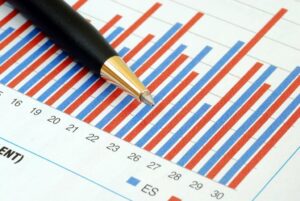The 5 Best Bookkeeping Services for Small Business

These tools will greatly reduce the time you spend on bookkeeping and invoices to help you organize your financial statements and gain control of your accounting. QuickBooks is a popular accounting software utilized by businesses and accountants all across the world. The platform offers many different products for people who are self-employed to enterprise solutions for larger companies. No matter the size of your business now, this tool makes it easier to manage your team and keep up with your business’s needs as it grows. CRM (Customer Relationship Management) software focuses primarily on managing a company’s interactions with its customers and potential clients. Field service management software, on the other hand, is tailored for coordinating on-site services, including scheduling, dispatching and job tracking.
Talk to businesses in your area to see what they are currently paying for bookkeeping services. Talk to people in your network who are also bookkeepers and ask what they are charging. In doing so, you can get a good idea as to the range bookkeepers charge for services. AI-automated software is arguably the single most transformative element to make an appearance in the world of bookkeeping, particularly for beginners seeking efficiency and accuracy. Choosing user-friendly platforms that automate routine tasks, such as data entry, categorization and reconciliation, can significantly reduce the learning curve and time spent per client, per task.
Nav’s Final Word: Bookkeeping Services
Their expertise can save you valuable time, ensure compliance, and provide valuable financial insights to support your business’s growth. Small cleaning business owners spend a lot of time traveling between clients’ houses or offices, and you can claim a tax deduction for those miles. For cleaning business owners, this means monitoring your transactions and ensuring you’re meeting all your tax obligations.

Depending on your individual needs of businesses, MyBookkeeprService offers different types of bookkeeping services, such as monthly bookkeeping services, QuickBooks cleaning up services, and so on. FIXE works How to do Bookkeeping for Cleaning Businesses with Gusto, ADP, Square, Toast and Paychex for payroll processing. With FIXE’s weekly vendor invoicing, you only need to take a picture of the invoice, and FIXE will file it and write a check to pay the vendor.
Get started with Remote Books Online today.
This process sees a middle ground between staffing formats and workload leadership. Opting for virtual bookkeeping offers benefits in terms of flexibility and cost-effectiveness for both the enterprise and the bookkeeper. Their professional team of experts can easily handle the different complexities of bookkeeping, ranging from daily bookkeeping to offering essential advice. Known for their professionalism, responsiveness, and quality, MyBookkeeprService ensures that your books are accurate and tax ready at all times. Decimal partners with accounting management software like QuickBooks, Gusto, and Bill.com to drive better financial visibility.
Because of the integration with Wave Accounting, it simplifies working with your bookkeeper and provides the ability to view your books in real time, which is why we selected it as the best for Wave users. In addition to bookkeeping, it provides accounting and payroll coaching as well as tax coaching, with access to both live coaching and email support. Wave Advisors offers bookkeeping support, accounting and payroll coaching, and tax https://www.bookstime.com/ coaching. Not a lot of information is offered in terms of the type of support offered, and Wave only provides pricing for prepaid annual plans—although month-to-month plans are available. The disadvantage of online bookkeeping services for cleaning businesses is that they can be expensive, depending on your needs and the size of your business. Proper accounting practices can help you keep track of your expenses, profits, and losses.
Merritt Bookkeeping: Best User Review Ratings for Basic Bookkeeping Services
Service Fusion offers distinct advantages for inventory tracking for field service operations. With the challenges of real-time inventory management in a field service context, it’s imperative to have a solution that keeps pace with both the in-field technicians and back-office operations. Service Fusion’s inventory management system is specifically tailored to the dynamics of field services, ensuring that parts, tools and materials are accurately logged, tracked and replenished. This not only helps in reducing potential downtime due to out-of-stock scenarios but also aids in optimizing stock levels, thus preventing overstocking or understocking issues.
You can rest easy knowing that each expense, each transaction, and each payment is 100% accounted for, and all info is easily accessible via robust reporting features. FreshBooks accounting software helps you run your cleaning business more efficiently. Send professional-looking invoices in a matter of minutes, without the stress of creating one from scratch. And thanks to our user-friendly cloud-based service software, you can even track every payment that comes in for your business – any time, anywhere.
